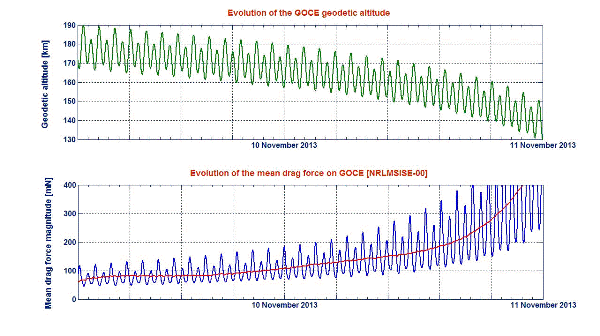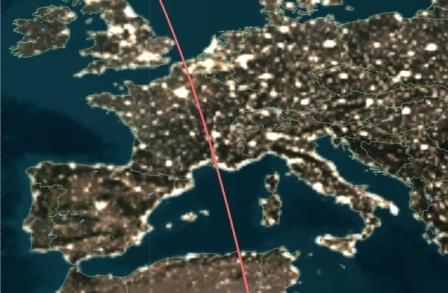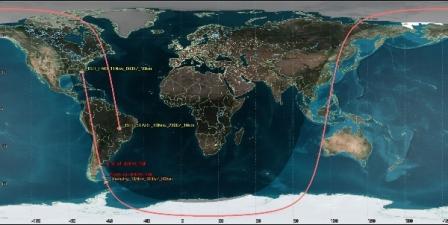The ESA's GOCE satellite was launched on 17 March 2009. It had a dry mass of 1002 kg and a roughly cylindrical shape of 1 m diameter and 5.3 m length, with wing-shaped fins spanning 2 m. After mapping the geopotential with unrivalled accuracy and detail for four years from an extremely low circular polar orbit, on 21 October 2013 the low thrust ion propulsion motor used to contrast the atmospheric drag was automatically shut down when the pressure in the xenon propellant tank dropped below a critical threshold. Then the satellite entered in "fine-pointing mode", a phase of orbital altitude decay with active fine attitude control carried out by a set of magnetotorquers. According to the pre-launch specifications, the attitude control system was expected to compensate the gravity gradient and the aerodynamic torques up to an average drag force along the orbit of 20 mN. However the system proved itself much more robust than envisaged, remaining operational until reentry, with drag forces exceeding 2000 mN.
According to an ESA sponsored pre-launch analysis, during the uncontrolled atmospheric reentry GOCE should have fragmented between 95 and 35 km of height, producing 43 macroscopic pieces, totaling approximately 270 kg, able to hit the ground along a 900 km footprint during a 17 minutes time interval. The most massive fragment should have had a mass just below 95 kg. Considering the orbital inclination of the satellite, all the places between 83.5° south and north were overflown. This corresponded to more than 99% of the Earth surface, excluding only two small spherical segments around the north and south poles. The global casualty expectancy associated with this reentry was 1/5000, i.e. slightly more than the internationally recognized alert threshold of 1/10000.
The uncommon nature of the GOCE reentry campaign, sharing an uncontrolled orbital decay with a finely controlled attitude along the atmospheric drag direction, made the reentry predictions for this satellite an interesting case study, in particular because nobody was able to say a priori if and when the attitude control would have failed, leading to an unrestrained tumbling and a sudden variation of the orbital decay rate. As in previous cases, ISTI/CNR was in charge of reentry predictions for the Italian Space Agency and civil protection authorities, cooperating and exchanging information with the other space agencies belonging to the Inter-Agency Space Debris Coordination Committee (IADC). Considering the peculiar nature of the GOCE reentry, the definition of reliable uncertainty windows was not easy, in particular taking into account the critical use of this information for civil protection evaluations. However, after an initial period of test and analysis, reasonably conservative criteria were elaborated and applied, with good and consistent results through the end of the reentry prediction campaign.
Being the attention of the Italian civil protection authorities focused on the national territory, during the last three days of satellite residual lifetime, reentries where simulated over Italy to obtain quite accurate ground tracks, debris swaths and air space crossing time windows associated with the critical passes over the national territory still included in the current uncertainty windows. 61 hours before reentry there were still 6 possible reentry opportunities over Italy, progressively reduced to 4 at minus 56 hours, 3 at minus 40 hours and 2 at minus 25 hours. Only 14 hours before reentry it was possible to exclude any residual risk of debris fall on the Italian territory and at minus 4 hours the final global ground track associated with the last reentry prediction uncertainty was issued to IADC. The GOCE fragments eventually plunged into the Southern Atlantic Ocean, between the Falkland Islands and the coast of Argentina, on 11 November 2013, between 00:24 and 00:40 UTC.
Immagini:



